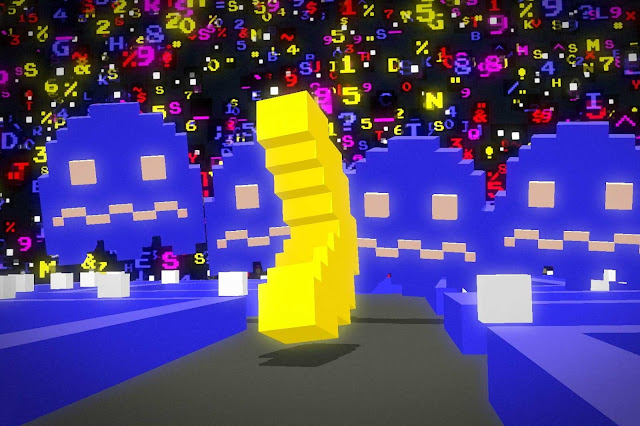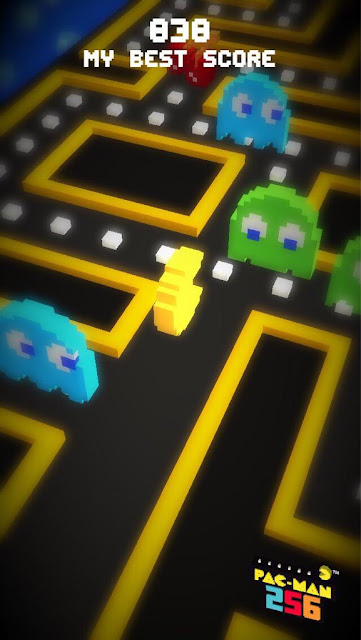Damn it. Just as I was getting over my ridiculous obsession with Crossy Road, along comes Hipster Whale’s follow-up. Pac-Mac 256 is proof of the impact that the tiny Aussie developer had on the industry, as Namco Bandai would allow it access to one of its most valuable franchise to essentially skin over as a sequel to Crossy Road. Unfortunately (for me), Pac-Man 256 is every bit as addictive as Crossy Road. There goes any hope I might have had to be productive in some way on every train trip I’ll be taking for the next couple of months.
Effectively, Pac-Man 256 gives players an endless, randomly generated Pac-Man level to progress through. As with Crossy Road, the goal is to move your character from the bottom of the screen ever northwards, avoiding obstacles while gaining points. Unless Crossy Road (where points are earned simply by moving forwards through the game space), in Pac-Man 256 you’ll need to direct the yellow circle to eat dots to score points, and rather than avoiding trucks and cars as you do in Crossy Road, here you avoid Pac-Man’s ghosts.
Related reading: Now, Hipster Whale, please save Q*Bert next. His last game was terrible.









